“The company was profitable. We probably would have pursued an IPO. The business was accelerating”, LiveRail CEO Mark Trefgarne tells me in his first interview about how his company was acquired by Facebook in July for what multiple sources say was $500 million.
Still, rather than go public, Trefgarne said his team realized that “If we work hard at Facebook, we have a real opportunity to take over the world…actually that’s not the best phrase [laughs]. Maybe not take over the world, but do some really industry changing stuff.”
With TV viewing down 4% and online video streaming up 60% in the last year according to Nielsen, FaceRail could soak up the flood of vido ad dollars headed to the Internet.
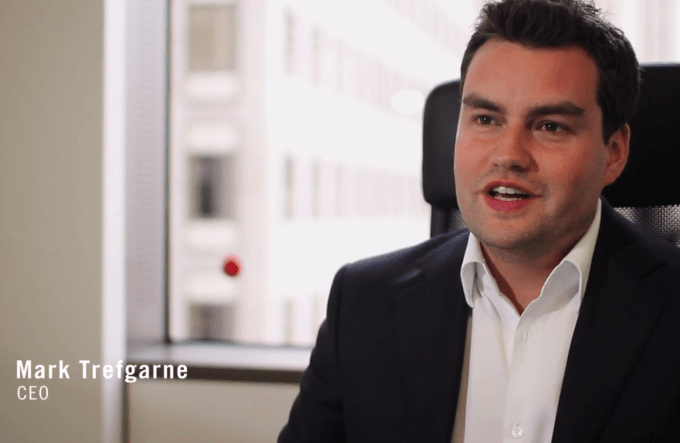
The smiley British entrepreneur was in good spirits when I met him and Facebook’s VP of ads product marketing at the social network’s palatial headquarters in Menlo Park, CA. That’s understandable. considering he secured a stunning exit while dodging one of the world’s most stressful experiences: shepherding a small company through an IPO.
Founded in 2007, LiveRail works with publishers to let them easily monetize their videos and websites by hosting video ads bought through 170 different ad networks. LiveRail had raised just $12 million and was helping target 7 billion video ad impressions a month before Facebook bought it out.
The 41X return delivered through the acquisition may have been better than LiveRail could hope for on the public market. Competing video adtech companies got destroyed when they went public. YuMe’s share price sank from its $9 debut to $4.97, while Tremor Media IPO’d at $10 and has fallen all the way down to $2.68.
Navigating the regulatory circus to get to that opening stock market bell also would have been a huge distraction.
“The pressure that a small company faces when they IPO is that the CEO becomes absolutely entrenched with talking to analysts every quarter. There’s a significant pressure to hit each quarter’s number in a short-term way” Trefgarne laments, looking like he dodged a bullet. “As part of Facebook, we’re able to think a little more long-term and are able to really invest into what the future of adtech will look like without having the fight-for-your-life stresses of being a very small public company.”

LiveRail had already learned a valuable lesson that as the Internet shifts to mobile, the public market doesn’t take very kindly to desktop-centric tech companies. Facebook’s own IPO made that clear. It went public with essentially zero revenue on mobile despite the fact that its usage was moving there, and was promptly hammered until it got mobile advertising sorted out. Now Facebook is earning billions on the small screen per year.
“We were already seeing a lot of our publishers say that 40 percent or 50 percent of their visitor time was on mobile devices,” Trefgarne recounts. “Mobile was not an area that LiveRail by itself had great experience with. Facebook brings the world’s greatest experts at monetizing mobile to the table.”
A Slow Courtship
Unlike some of Facebook’s other big buyouts like Instagram, LiveRail’s acquisition didn’t happen overnight. There weren’t any of Mark Zuckerberg’s no-nonsense dinner meetings or convincing walks through the Silicon Valley foothills to quickly seal the deal. The courtship was a slow burn dating back to 2013.
“We first spoke to the team at Facebook about a year ago to see what we could do together. It was very much initially a business development conversation.” LiveRail didn’t know at the time, but Facebook was plotting how it could expand its ad targeting prowess built on its trove of personal data to the rest of the Internet — a quest in which LiveRail could play a big part. It wasn’t until April 2014 that Facebook would unveil its Audience Network to do just that.
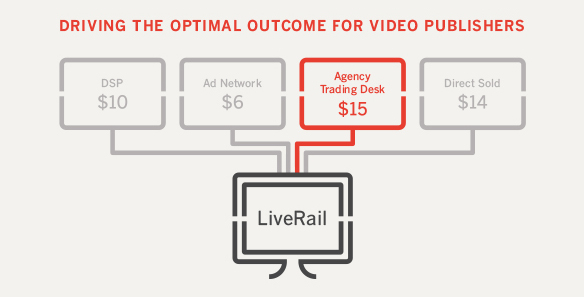
“Then, the conversation just accelerated over the period of a year. There were periods where we didn’t speak,” Trefgarne recalls. “Then it all came together around June, when we said, ‘You know what? There’s an opportunity here to build something amazing together.’”
That was when Trefgarne got a call from Facebook’s Director of Product Mike Hudack saying, “Do you want to spend a week on campus?” The startup CEO remembers: “We brought the entire management team to Menlo Park and locked them in a room together [with Facebook’s ad execs] to talk about what it would look like if we were going to do something like an acquisition.”
They figured out that combining Facebook’s targeting powers and advertiser relationships with LiveRail’s video-serving technology and publisher relationships would be “much bigger than either of us could do separately”, says Brian Boland, VP of product marketing for Facebook Ads.
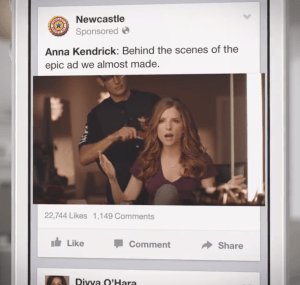 LiveRail offered Facebook a leg up, too. The social network saw a stunning 50 percent increase in on-site video views between May and July this year. LiveRail’s skills could squeeze more money out of the auto-play video ads Facebook now shows. The startup’s sales teams could also serve as a vector to place ads bought through Facebook’s Audience Network on LiveRail’s publishers’ properties.
LiveRail offered Facebook a leg up, too. The social network saw a stunning 50 percent increase in on-site video views between May and July this year. LiveRail’s skills could squeeze more money out of the auto-play video ads Facebook now shows. The startup’s sales teams could also serve as a vector to place ads bought through Facebook’s Audience Network on LiveRail’s publishers’ properties.
Boland explains that “we generally love to build when we can build” but in this case, it was better for Facebook to buy LiveRail for three reasons:
- “We looked at the technology and knew they were a leader in the space.” It would have taken Facebook too long to build that video adtech on its own, and there was no time to waste as TV ad dollars finally started going digital.
- “We got to know their teams, and their teams were a great culture fit; they felt like Facebook people.”
- “They were just experts on the space. From the product team all the way through to the sales and account manager folks, it felt like a great team to really help us accelerate our knowledge and expertise around publishers.”
Though Trefgarne met Zuck a couple of times, it was the ad execs like Boland who drove the deal to completion.
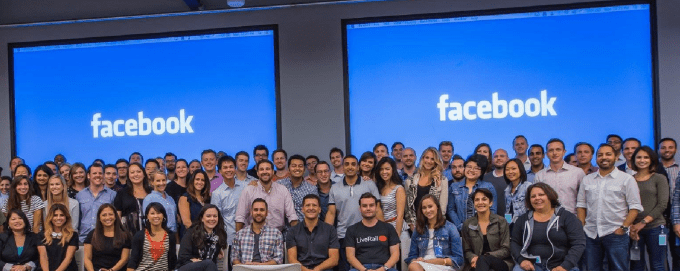
Making The Best Of An Impression
Acquisitions can slow down speedy companies, but LiveRail has just kept growing since it jumped in bed with Facebook. It’s now serving 10 billion video ad impressions per month, up from 7 billion when the deal was announced.
Together, they’re trying to make ad views, or impressions, matter after years of focus on clicks. That’s especially important for LiveRail because its video ads are often pre-rolls or interstitials. They’re vivid, but people don’t want to click away from the actual content they were watching.

Since the dawn of search ads and banners, “it was a click-based economy,” Boland tells me. The ads were little and ugly, just a few lines of text or a cramped image stuffed around search results or site content. They weren’t very striking or memorable, so all that counted was if someone immediately clicked through.
Clicks were also one of the only ways to measure ads. No one knew if seeing a banner on the web for a new car actually made you more likely to buy it. “‘What’s the click-through rate of my banner look like?’ That was the end-all be-all. The value created in the impression was being lost.”
Things just got more fuzzy with the rise of mobile. Without a unified tracking cookie system, advertisers couldn’t tell if a view on mobile led to a click or purchase on web or vice versa.
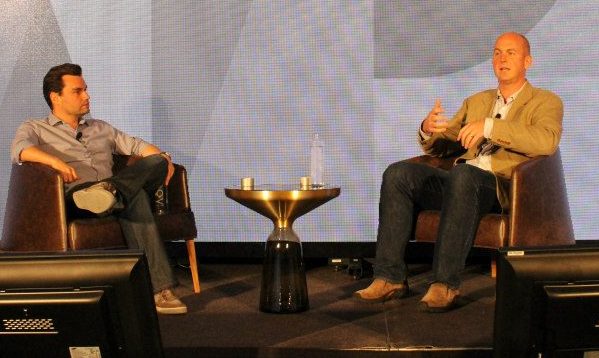
While Facebook gets a lot of credit for its ad targeting, its secret weapon is its ad measurement solution to the impression problem. Facebook has invested a ton into conversion tracking so it knows if you bought something after seeing one of its ads. It all works because people stay logged in to Facebook, which ties together their web and mobile identities.
Online, Facebook uses tracking pixels installed on advertisers’ checkout pages to measure conversions even weeks after an initial view. Offline, it partners with brick-and-mortar purchase data brokers like Datalogix to connect your supermarket buys using a loyalty discount card to your Facebook profile. Businesses can also securely upload privacy-protected records of who bought what at their stores, which Facebook then matches to who saw what ads.
All this lets Facebook tell advertisers when they earned more money from sales inspired by their ads than the ads themselves cost. When it can demonstrate this return on investment, advertisers pour more cash into Facebook’s coffers.

LiveRail didn’t know how to do any of this. But now as part of Facebook, it does. If you see one of its vibrant video ads on the web showing just how cool you’ll look in a fashion brand’s clothing, it doesn’t matter if you buy a shirt from them three weeks later on mobile or in their physical store. LiveRail connects the impression to the sale with no need for a click.
The combined company will need all the targeting and measurement it can get to beat out fellow video adtech companies like Tremor, YuMe and BrightRoll, which Yahoo just acquired for $640 million. It seems to have an edge, though. Just today, TV network Fox announced its local stations would use LiveRail to monetize their content on their websites. More and more customers are coming out of the woodwork.
The FaceRail team-up comes at the perfect time, though. Nielsen is finally measuring online video views so advertisers can make apples-to-apples comparisons between television and digital. TV commercials don’t end with “clicks.” They’ve always just been impressions. But now Facebook can prove how views lead to purchases in a way TV never could.
Boland concludes, “We’re moving from this click economy to understanding people’s attention.”































Comment